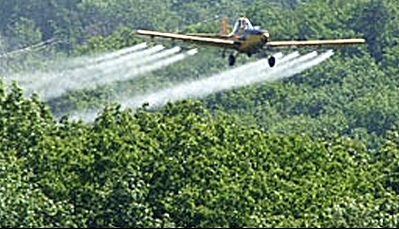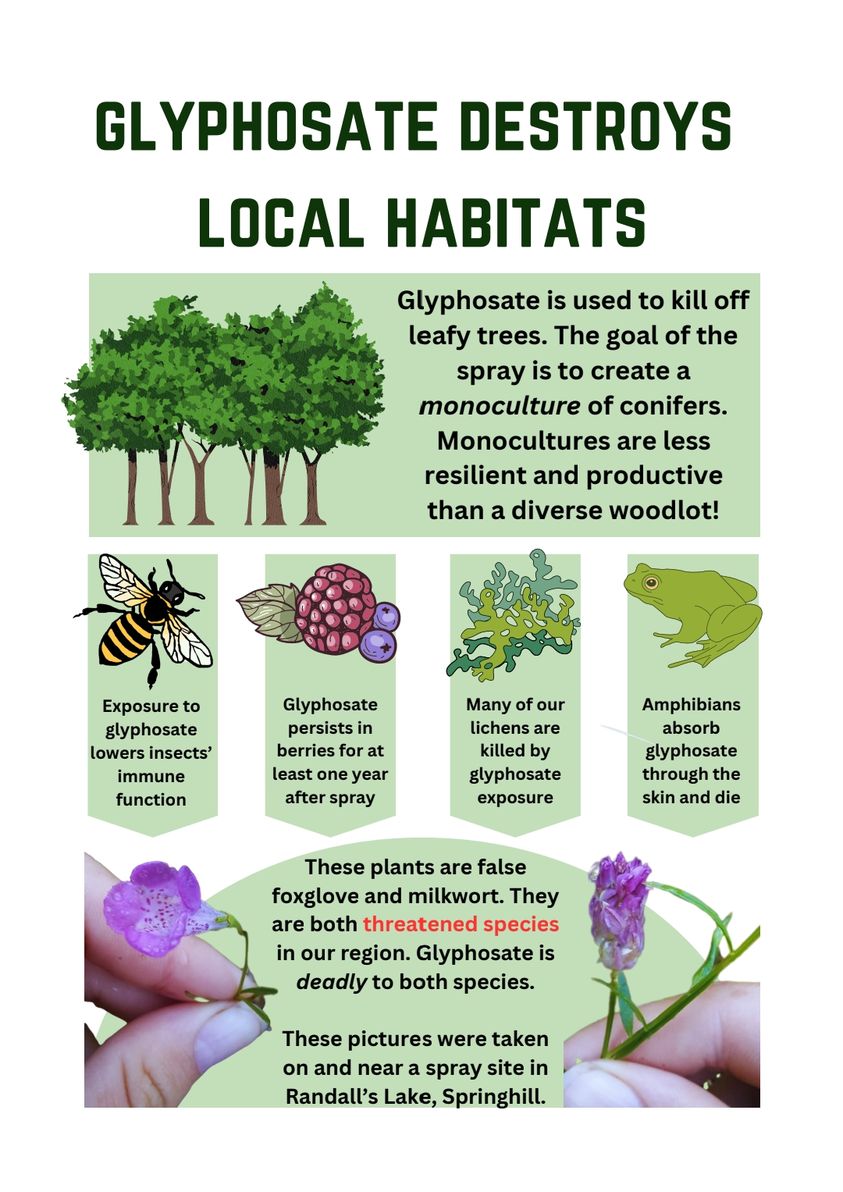What is Glyphosate?

Glyphosate – In Nova Scotia Forest
Glyphosate – The Science (Research Links)
Glyphosate – In The News
Glyphosate – What You Can Do
What is Glyphosate, anyway?
Glyphosate began in 1950 as an industrial descaling agent. It’s ability to effectively bind with or break the bond between minerals made it a popular chemical for cleaning industrial tanks and pipes.
Our bodies and those of all plants and animals and the soil are made up of essential minerals like magnesium, iron and potassium. Glyphosate binds with these minerals, making them less available for use in our bodies, in plants and organisms in the soil.
Monsanto patented a concentrated form of glyphosate in 1974 and marketed it as Round Up®. When Monsanto’s patent expired in 2000, many other companies produced herbicides using glyphosate as the main ingredient.
Glyphosate is used extensively in the farming industry. It kills annual weeds before sowing so that harvesting is easier and less expensive. Crops such as canola, soya, corn and sugar beets are “RoundUp ready”, meaning that an extra gene has been added to the plant to help break down the glyphosate molecule.
Glyphosate is also used extensively in (industrial) forestry to kill “weed trees” like maple, birch, aspen – all hardwoods, since the forestry industry likes the fast-growing softwoods much better. See Glyphosate in Nova Scotia by Rob Bright and Nina Newington.
In 2003, Monsanto patented glyphosate as a broad-spectrum antibiotic. It was not brought to market because it was considered too broad and targeted all bacteria.
Considering all life is either made up of or dependant upon bacteria, this is not a good characteristic of glyphosate. Our gut/digestive system is dependant on bacteria to function properly. Plants (including trees), animals – actually all living things are made up of and dependant upon bacteria to live.
Glyphosate has been linked with:
Parkenson’s Disease
Non-Hogkins Lymphoma
Forms of gut disease (like celiac) and gut-related cancers
Autism and other neuological conditions and diseases
Dementia and other memory-associated disfunctions
Governments and governing bodies that regulate glyphosate, in almost all cases, base their decision-making on research that is either prepared by the corporation itself, or by a laboratory that is funded by the industry. Axel Mei et al.
Not a bad revenue stream…
Monsanto integrates glyphosate into every aspect of the food production system (except organic farming) and into the industrial forestry industry world-wide.
then
Bayer, the world’s leading pharmaceutical company buys Monsanto in 2016..
which means…
Bayer is now able to increase profits while making the world sick and at the same time, increase its revenue stream by researching and developing medicines and treatments for the diseases, ailments and conditions they are creating. And all that while being supported by most world governments.

poster credit: Maria Duynisveld
“Don’t Spray Us: Cumberland County” group
